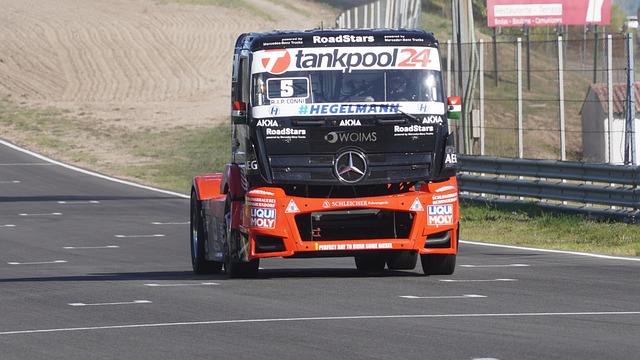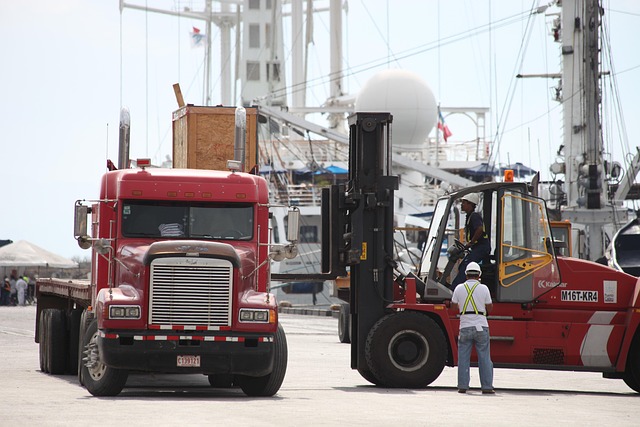Looking to register your car in California? This comprehensive guide breaks down the process step-by-step. From understanding essential requirements to gathering all necessary documents, you’ll learn what’s needed to visit your local DMV smoothly. Key aspects include the crucial dmv VIN verification process, ensuring a quick and efficient registration experience. By following these clear instructions, you’ll be on the road in no time with a properly registered vehicle.
- Understand California Car Registration Requirements
- Gather Necessary Documents for Car Registration
- Visit Your Local DMV for Vehicle Registration
- Complete Vin Verification Process Efficiently
- Receive Your Registered Vehicle Plate and Documentation
Understand California Car Registration Requirements

Before registering your car in California, it’s crucial to understand the state’s specific requirements. The California Department of Motor Vehicles (DMV) mandates that all vehicles operating within the state be properly registered and have undergone a thorough inspection. This includes verifying the vehicle identification number (VIN) to ensure its authenticity and history.
A key step in the process is the DMV’s VIN verification, which can often be completed through a mobile vin verifier service. These services streamline the inspection by enabling on-site or remote checks using the unique 17-character VIN code etched into the vehicle’s chassis. A valid VIN inspection certifies that your car meets all necessary safety and environmental standards, clearing the way for seamless registration with the DMV.
Gather Necessary Documents for Car Registration

Before you begin the car registration process in California, it’s essential to gather all the necessary documents. This includes your vehicle’s registration form, which can be obtained from the DMV or downloaded online, and proof of insurance. You’ll also need a valid driver’s license or state ID card. One crucial document is the Vehicle Identification Number (VIN) verification report, which can be acquired through a DMV vin verification process or by using a mobile vin verifier for a quick and convenient mobile vin inspection.
Make sure you have the vehicle’s title in hand, as well as any bills of sale or lease agreements if applicable. A completed odometer reading form is also required, along with the appropriate fees. By ensuring that all these documents are readily available, you’ll streamline the car registration process and avoid potential delays.
Visit Your Local DMV for Vehicle Registration

Visiting your local DMV is a crucial step in registering your car in California. Bring all necessary documents, including proof of ownership and identification, to streamline the process. The DMV offers several services for vehicle registration, including VIN (Vehicle Identification Number) verification, which ensures the authenticity of your car’s details. This is a vital step to confirm that the vehicle matches the information on record.
In today’s digital era, many DMVs also provide options for mobile VIN verification using a simple application. This allows you to complete the inspection process from the comfort of your home or even while you’re on the go. A mobile vin verifier can be a game-changer, saving time and effort during what could otherwise be a cumbersome task.
Complete Vin Verification Process Efficiently

The DMV vin verification process can be streamlined by ensuring a thorough and efficient completion. First, gather all necessary documentation, including the vehicle’s registration, proof of insurance, and identification for both the owner and driver. Then, schedule a mobile vin inspection if preferred, as many services offer convenient options like a mobile vin verifier. This step simplifies the process, saving time and effort by allowing the verification to occur at your location.
During the vin inspection, ensure all details match across the vehicle’s documents and the DMV records. Check for any discrepancies or potential issues with the vehicle’s history, as these could delay registration. A proactive approach by accurately completing the vin verification form enhances a smooth registration experience.
Receive Your Registered Vehicle Plate and Documentation

After completing your car’s registration process at the California DMV, it’s time to receive your official vehicle plates and essential documentation. This step is crucial as it marks the finalization of your vehicle’s legal status in the state. The staff at the DMV will conduct a DMV VIN verification, which ensures that the vehicle identification number (VIN) on your car matches the information in their records. This process is designed to prevent fraud and ensure the security of California’s registered vehicles.
You’ll be handed your new registration documents, including your vehicle plates, which must be displayed prominently on your car’s rear window. Additionally, you may receive a vin inspection report, outlining the VIN details and any other relevant information. For those who prefer convenience, some services offer mobile vin verification, allowing you to complete this step without visiting a DMV office.
Registering a car in California involves understanding key requirements, gathering essential documents, and completing processes like DMV VIN verification. By adhering to these steps and ensuring all necessary paperwork is in order, you can efficiently secure your vehicle’s registration, receive the corresponding plates, and hit the road legally. Remember, timely registration not only complies with state laws but also ensures a smoother driving experience.
